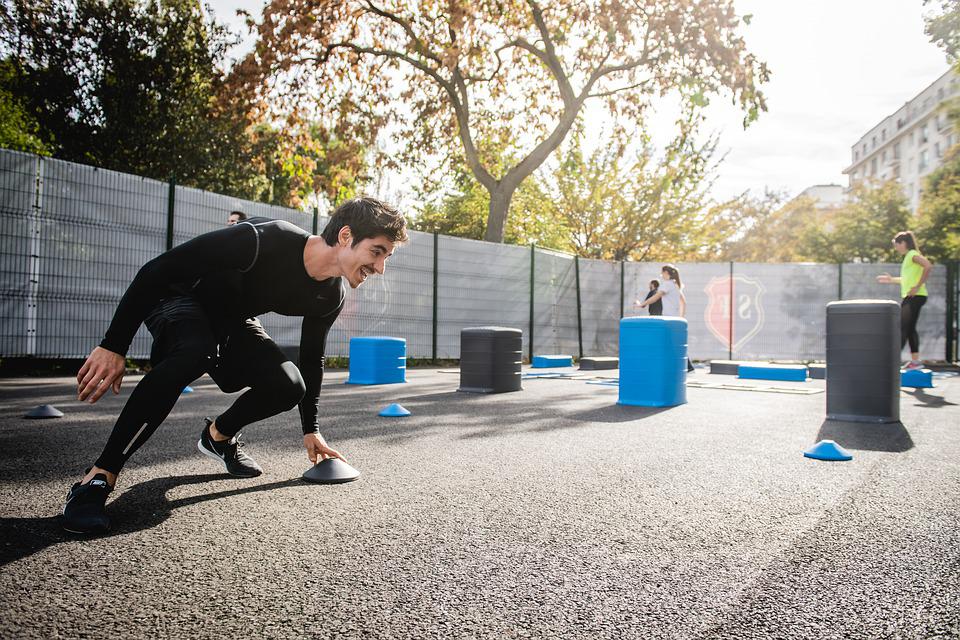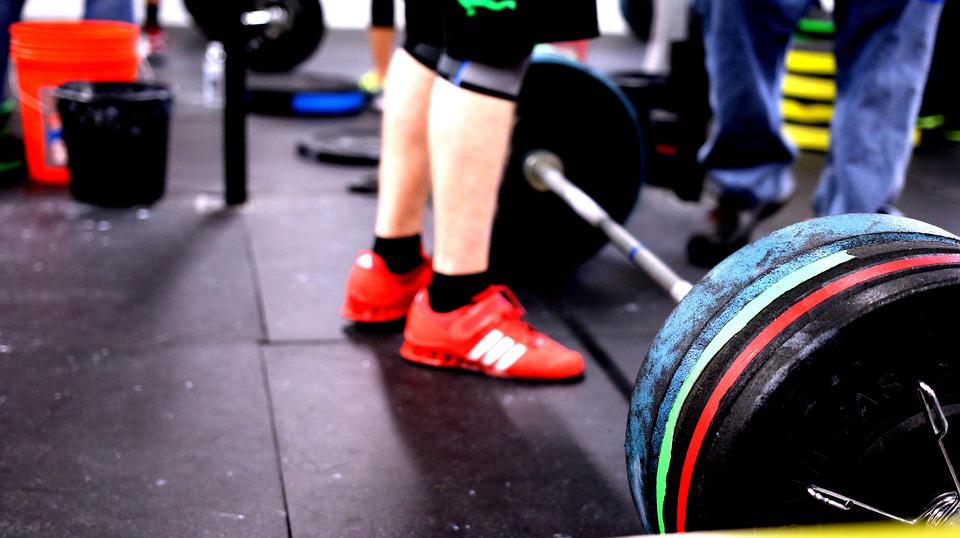Mixed martial arts have grown a lot in recent years and are now a very popular sport. Organizations such as the UFC, Bellator, and ONE FC hold events almost every week, where viewers can watch some of the best mixed martial artists in the world compete against each other. As the sport has become more competitive, athletes have to be more skilled and conditioned than ever to be successful. This is why effective strength and conditioning training is such an important part of mixed martial arts.
Since MMA is physically demanding and organizing training is complicated, I have to be careful when planning my programs for my combat sports athletes.
Energy Systems
An athlete’s ability to generate explosive power, control an opponent, and other skills rely on different energy system pathways. These pathways can compete with each other, making training complex.
The type of fighting a fighter will determine what kind of movements they use. Some fighters specialize in grappling-based arts or striking, while others use a mix of both. According to the UFC, in 2018, heavyweights had the highest percentage of fights finished by knockout, while women’s strawweight contenders had the highest percentage of submission finishes and the highest percentage of decision bouts. This must be taken into account when designing a program.
Metabolic Conditioning
MMA bouts are three to five five-minute rounds. Fighters must have the stamina to recover quickly between rounds and maintain a high level of intensity throughout the round to have the best chance of winning. Fights can end in the early stages, by knockout, submission, or injury, but for those who go the entire distance, it is advantageous to have robust levels of conditioning.
Traditionally, many coaches would have their fighters do a long, slow, steady-state aerobic activity to build aerobic endurance. This would include activities such as jogging, biking, and swimming for multiple hours a week at around 40 to 70% of their maximum heart rate. This would build the foundation for the fighter, who would then build further from there and eventually train in a more specific way as the fight neared.
The new method that coaches are using is high-intensity interval training (HIIT). HIIT is when there are brief bouts of intense exercise with longer bouts of lower-intensity recovery. The benefits of HIIT over the old method, low-intensity steady-state conditioning (LISS), is that it doesn’t take as much time and there are fewer negative interactions between strength and power development.
During a HIIT session, fighters may do an activity like running on an incline treadmill for 30 seconds followed by two minutes of walking and active recovery. This helps them to condition their bodies.
The fighter may do one minute of striking combinations, followed by one minute of takedown defense and sprawling, followed by 1-5 minutes of active or passive recovery. Important considerations the coach can manipulate are:
- The rest period.
- Mode of exercise.
- Volume.
- Duration.
Strength and Power
In Mixed Martial Arts, fighters need to be strong and powerful to be successful. Strength provides the power needed for MMA moves such as punches, kicks, and elbows. Power is also necessary to sustain these moves throughout a fight. Therefore, training to improve power endurance is essential for MMA fighters.
In order to increase power when designing a workout, the weight must be moved quickly through the concentric portion of the lift, with the resistance staying between 40% and 80% of the athlete’s 1RM. The optimal load for each exercise may vary depending on upper or lower body, pushing, pulling, hinging, jumping, and other factors, so coaches must do their own research to find the right loading schemes for their athletes.
One way to improve strength and power fighters is to develop isometric strength. This can be done by doing exercises such as carrying weight, squeezing medicine balls, or hanging from a bar. Another way to improve grip strength is by using towels for pull-ups, rows, and hangs.
Speed
Gomez et al. found that plyometric training increases kicking power in football players when combined with resistance training. Using this information, trainers could potentially increase kicking and punching power in fighters by using upper and lower body plyometrics.
A Well-Rounded Fitness Plan For MMA And BJJ Athletes
The workout plan mentioned is a good way to condition your body for MMA and BJJ while still leaving time to practice your techniques.
Week 1
Day 1
A1. Barbell front squat 3×3 reps Clean and press two kettlebells, only cleaning one on the first rep. Do this three times, for a total of three reps.
B1. Weighted chin 6-8 reps
B2. Suspended pushups 6-8 reps
B3. Single leg deadlift 5 reps
Perform circuit 3 x
C2. Perform a KB rack carry, followed by a farmer carry, for a total of four sets. Go as far as you can while maintaining good form.
Day 2
A1. Broad jump 3x 1 – full recovery
B1. Double KB clean and jerk 2-4-6 3x
On the minute, do 5 one-arm kettlebell swings with your right arm, then 5 one-arm kettlebell swings with your left arm. Do this for 10 minutes.
Day 3
Perform 3 sets of barbell front squats using the same weight as on day 1. Doing a kettlebell clean and press with two kettlebells, starting with only cleaning on the first rep, and doing three sets of three reps with the same weight of kettlebells.
B1. Weighted chin 6-8 reps
B2. Suspended push-ups 6-8 reps
B3. SLDL 5 reps
Perform circuit 4X KB rack carries should be alternated with farmer carries, as far as you can go while maintaining good form.
Week 2
Day 1
A1. Broad jump: 3x 2 – full recovery
B1. Double KB clean and jerk: 2-4-6 4x
1-arm kettlebell swings: 6 on each side on top of each minute for 10 minutes
Day 2
A1. Barbell front squat: 4×3- increase weight by 5-10lbs. Doing a double KB clean and press with only cleaning on the first rep 4 times and using the same bells 3 times.
B1. Weighted chin-ups: 6-8 reps
B2. Ring push-ups: 6-8 reps
B3. SLDL: 5 reps
Perform circuit 4X alternate between carrying a KB rack and farmer carries for 5 rounds, going as far as you can while maintaining good form
Day 3
A1. Broad jump: 3x 2 – full recovery
B1. Double KB clean and jerk: 2-4-6 4x (if your form gets sloppy, lower the load)
Perform 7 one-arm kettlebell swings on one side, then 7 on the other side, on top of each minute for 10 minutes. If your form starts to deteriorate, lower the weight you are using.
Week 3
Day 1
A1 Barbell front squat- 5×3- increase weight 5-10lbs
Perform 5 sets of 3 repetitions of the clean and press exercise using two kettlebells, only cleaning the kettlebells on the first repetition.
B1. Weighted chin- 6-8 reps
B2. Suspension push ups-6-8 reps
B3. SLDL-5 reps
Perform circuit 5 x
Farmers carries followed by KB rack carries- 5x as far as you can go in good form.
Day 2
A1. Broad jump- 3x 3 – Full recovery
B1. Double KB clean and jerk – 2-4-6 5x
On the top of each minute, do one-arm kettlebell swings for a total of 10 minutes.
Day 3
A1 Barbell front squat- 5×4- same weight
Clean two kettlebells and press them overhead, only cleaning the first kettlebell on the first rep. Do this for five sets of four reps, using the same weight kettlebells throughout.
B1. Weighted chin- 6-8 reps
B2. Suspension push ups-6-8 reps
B3. SLDL-5 reps
Perform circuit 5 x
C1. KB rack carries should be alternated with farmer carries. Go as far as you can in good form. C2. Rest for 60 seconds.
C2. Rest 60 seconds
Week 4
Day 1
A1. Broad jump- 4x 3 – full recovery
B2. Double unders – 50-40-30-20 For the strength portion today, you will be doing a double KB clean and jerk for 2-4-6-8 reps. You will do this for 3 sets. For the conditioning portion, you will be doing double unders for 50-40-30-20 reps.
C1. 1 arm KB swing -9+ 9 each on top of each minute – 10 minutes total
On the top of each minute, do one-arm kettlebell swings for 10 minutes total.
Day 2
A1 Barbell front squat- 5×5- same weight
To perform a double KB clean and press, you will need two kettlebells of the same size. Start by cleaning the kettlebells to your shoulders, one at a time. Once both kettlebells are at your shoulders, press them both overhead. Lower the kettlebells back down to your shoulders and repeat. Do five sets of five repetitions.
B1. Weighted chin- 6-8 reps
B2. Suspension push ups-6-8 reps
B3. SLDL-5 reps
Perform circuit 5 x
Alternate KB rack carries with farmer’s carries as far as you can go while maintaining good form.
Day 3
A1. Broad jump- 4x 3 – full recovery
Clean the KB twice, then jerk it four times, six times, and eight times. Do this three times.
Starting at the top of every minute, do 1 arm kettlebell swing for 10 seconds, then rest for the remaining 50 seconds. Do this for 10 minutes in total.
Week 5
Day 1
A1. Perform a double KB clean and press, only cleaning on the first repetition. Do this for 3 sets of 2-3 repetitions, moving up 1 set of bells each week.
B1. Weighted chin- 6-reps
B2. Suspension push ups-8 reps
B3. SLDL-5 reps. Perform circuit 3X – increase weight across sets
C1. Perform three sets of KB rack carries, going as far as you can without putting the bell down.
Day 2
A1. Broad jump- 5x 3 – full recovery
B1. Double KB clean and jerk – 2-4-6-8 4x
Every minute on the minute for 10 minutes, swing a heavy kettlebell 5 times on each side.
Day 3
3 sets of barbell front squats followed by the same number of sets and repetitions as day one.
Clean and press two kettlebells, only cleaning on the first rep. Do three sets of two to three reps with the same weight.
B1. Weighted chin- 6 reps
B2. Suspension push ups-8 reps
B3. SLDL-5 reps
Perform circuit 3x-increase weight across sets
Carry the kettlebell rack as far as you can go before putting it down, and do this for 3 sets.
Week 6
Day 1
A1. Depth Drop- 3×1
B1. Double KB clean and jerk – 2-4-6-8 5x– 20 swings altogether
Every minute, on the minute, do six kettlebell swings with one arm, then switch arms and do six more. Do this for a total of 20 swings. Use the same weight as you did yesterday.
Day 2
A1- Pendlay rows- do 4 sets of 10 repetitions, then rest for 2-3 minutes
Clean and press two kettlebells, doubling the weight from the previous week. Repeat this four times, then three times using the same weight.
B1. Weighted chin- 6 reps
B2. Suspension push ups-8 reps
B3. SLDL-5 reps
Perform circuit 4x
Carry the KB rack as far as you can go into farmer’s carries without putting the bell down (4 sets).
Day 3
A1. Depth Drop- 3×2 for 10 minutes. KT For 10 minutes do 1 arm KB swing, then 7+7 on top of each minute, using the same weight as last day.
Clean the KB twice then jerk it four times, six times, eight times, and five times.
Week 7
Day 1
The barbell front squat should be performed five times, with three repetitions each. The weight used should be the same as the previous week.
Clean and press two kettlebells, only cleaning on the first rep. Do five sets of two to three repetitions, using the same weight as the previous week.
B1. Weighted chin- 6 reps
B2. Suspension push ups-8 reps
B3. SLDL-5 reps
Perform circuit 4x
Carry the KB rack as far as you can without putting the bell down (4 sets).
Day 2
A1. Depth Drop- 3×3 (OR 3 sets of max rep double KB clean and jerk) B2. Ring dips – 12-10-8- 6- 4-2- 3x (OR 3 sets of max ring dips).
B1. do a double KB clean and jerk for 2 reps, then 4 reps, then 6 reps, etc. up to 10 reps. Do this for 3 sets.
B2. do 12 ring dips, then 10 ring dips, then 8 ring dips, etc. down to 2 ring dips. Do this for 3 sets.
Swing a kettlebell around your head for 8 repetitions, then 8 more on the opposite side for 10 minutes using the same weight as the previous day.
Day 3
Perform 5 sets of 3 reps of the barbell front squat, using the same amount of weight as you did the previous week.
KB clean and press (double)-5×2-3 same weight as the previous day
B1. Weighted chin- 6 reps
B2. Suspension push ups-8 reps
B3. SLDL-5 reps
Perform circuit 4x
Carry the KB rack as far as you can without putting the bell down (5 sets).














